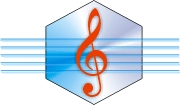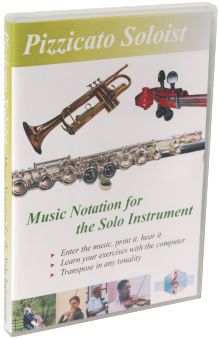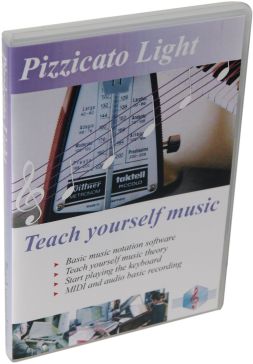Adding the figured bass symbols
In traditional harmony, it is common to display the figured
bass under the notes, to specify a third (3), a sixth (6),…
These figures can be added in four possible ways. You can create them in the chords libraries, in the form of
new chords, using the Options menu , Chords library item. Only
Pizzicato Professional can add chords to the original library.
Notice that in this case, the chord notation will also include
the name of the note, for example "C 6". You can add this figure under the staff by using text blocks. You can add it by using the lyrics tool, exactly as placing
syllables under the notes. You can create a new tool palette (Pizzicato Professional
only) and add to it the symbols of the main figured basses. For solution (4), here is how to create a simple text symbol
in a palette. Create a new palette or use an existing palette. To create a
new palette, select the New palette... item in the Tools menu. Open the graphic symbol palette. It contains a
"coda" simple text tool. While holding down the CTRL
key, drag this "coda" symbol into the palette where you
want to add a text symbol and release it. A dialog lets you
select "Duplicate". Validate. A new "coda"
symbol appears. Double-click this new "coda" tool. Modify its name
in the upper part of the dialog and then click the
"Create/modify…" button. A graphic editor appears. Double-click on the "coda"
small text displayed in the upper left part of the dialog. Modify
the contents of the text in the dialog box and validate. Close
the graphic window and the dialog of the symbol. The text symbol
is ready. When you want to use it, select it and click in the
score. You will find all the explanations about the creation and the
modification of symbols on page:
www.arpegemusic.com/manual33/EN650.htm

All rights reserved for all countries
Pizzicato is a trademark owned by Arpege sprl





























